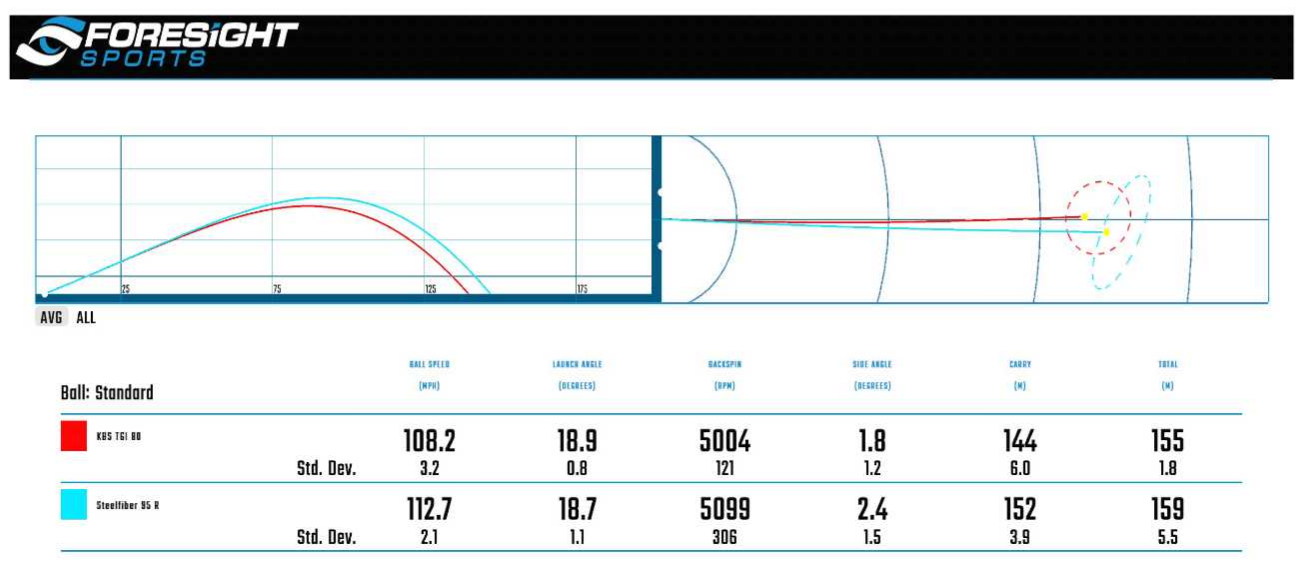KBS Steel Shafts for Irons and Hybrids
KBS is the abbreviation for "Kim Braly Signature" and thus goes back to the founder of KBS, Kim Braly. Today, Kim Braly is still the mastermind behind KBS and is closely linked to the success of the shafts. The most famous fan of KBS shafts is certainly Phil Mickelson. But many other professionals now also trust KBS.
What makes KBS unique is the full focus on iron steel shafts. Only recently the range was extended with a graphite shaft for hybrids and irons, namely the TGI. And this shaft has very quickly established itself as a real steel alternative.
KBS actually offers a very wide range of shafts and is represented in all weight categories. But the choice for good amateurs and tour pros is by far the largest. There are several options such as the KBS Tour, C-Taper and $-Taper. These shafts, which are successful on the Tour, are also available in lighter amateur versions such as the C-Taper Lite. KBS regularly expands its range with shafts such as CT, Hi-Rev 2.0 and Tour FLT.

C-TAPER
The KBS Tour C-TAPER is a high-quality shaft for players who prefer lower ball flights. In terms of bending profile, the C-Taper differs from the KBS Tour in that it is slightly softer in the middle, but much harder in the tip section. The C-Taper belongs to the low spin, low launch shafts and is therefore often used on the Tour.

C-TAPER LITE
The KBS C-TAPER LITE is for players looking for a medium high ball flight. The feeling when hitting is much softer than with the KBS C-TAPER.

KBS TOUR
Ideal for players who are looking for a medium ball flight and want a pleasant feeling when hitting. Available from 95 grams to 135 grams. The KBS Tour shaft has basically the same profile as the $-Taper, although the characteristics are a little more distinct. This means that the Tour is a bit softer in the grip area, harder in the middle and a bit softer in the tip section.

Tour V
With this shaft Phil Mickelson won the Scottish and British Open 2013 - long before the shaft was available on the market. The Tour V shaft is much softer in the toe and much harder in the middle compared to the normal Tour.
$-Taper
Even before the release of the $ taper, the shaft had already won twice on the PGA Tour. The steps are very long with this shaft and only barely visible. The $-Taper was developed as a KBS Tour alternative with slightly less spin.
In terms of profile, the $-Taper is very soft in the grip area, rather stiff in the middle area and again slightly softer in the tip section.
Hi-Rev 2.0
The Hi-Rev 2.0 is a wedge shaft that has replaced the KBS Tour 610. It is available in 115g, 125g and 135g - corresponding to R, S and X respectively. The shaft is designed for maximum spin and the bending profile is basically the same as the KBS Tour - although the deviations from the norm are somewhat smaller.
KBS TGI - Tour Graphite Iron
KBS is actually specialised in steel shafts for irons and with the TGI it finally ventures into the field of graphite shafts. And to be honest: The result is really good. The TGI shafts have indeed become an attractive steel shaft alternative. Tour pros especially use TGI shafts in their hybrids and driving irons and the weight ranges from 50g up to 110g. TGI shafts are generally not soft and are aimed more at players who expect a certain stiffness from their shaft, but also want to save weight. TGI shafts are sometimes harder than comparable steel shafts with more weight.
In terms of profile, the TGI is extremely soft at the end of the grip and therefore gives a soft feel. However, the rest of the shaft is inconspicuous, i.e. neither the tip nor the middle part is particularly soft or hard.
KBS TGI vs. Aerotech Steelfiber
The following test comes from a real fitting where the player wanted a relatively stiff but also light carbon shaft for his irons. Among others, the KBS TGI 80 and the Aerotech Steelfiber 95 R came into question. Both shafts are indeed relatively stiff with a CPM of over 300 and thus designed for about 85mph club head speed with the 6 iron.
This test shows one thing above all: the shaft profiles are quite different, while both shafts produce relatively similar data. This means that launch and spin are practically identical, but the player was able to accelerate the club significantly better with the Steelfiber shaft.

For him, the Steelfiber felt much softer (although it is not). This is partly because the middle part of the Steelfiber is relatively soft and the stiffness is mainly concentrated on the tip and the end of the shaft. The KBS TGI, on the other hand, has a very "neutral" bending profile and becomes steadily softer from butt to tip.
The dispersion with the KBS TGI was much lower than with the Steelfiber. With the latter, the player had more difficulty controlling the clubace. This can be seen, among other things, in the variance of the face with 2.7 to 1.6. This means that the clubface was more often clearly closed or open.
Both shafts were not ideal in this case. However, the test clearly shows how different seemingly "identical" shafts feel to a player and what different results they can produce.

